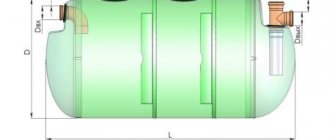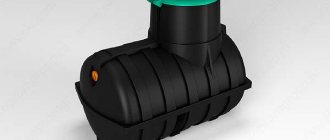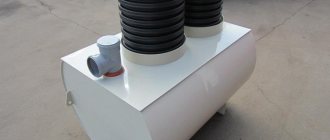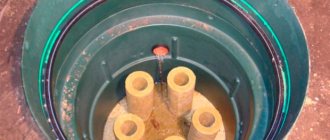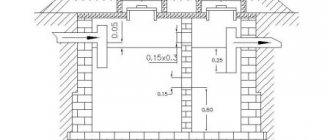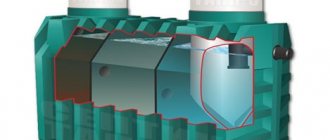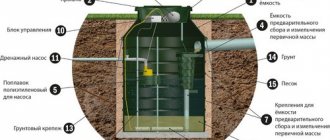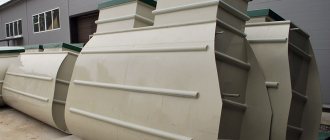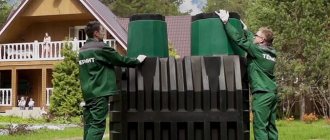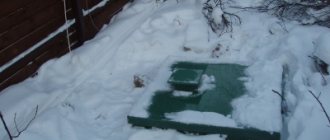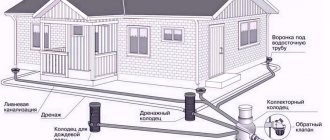Characteristics and types
The flexible hose for connecting plumbing is a hose of different lengths made of non-toxic synthetic rubber. Thanks to the elasticity and softness of the material, it easily takes the desired position and allows installation in hard-to-reach places. To protect the flexible hose, there is an upper reinforcing layer in the form of a braid, which is made from the following materials:
- Aluminum. Such models can withstand no more than +80 °C and retain functionality for 3 years. At high humidity, aluminum braiding is prone to rust.
- Of stainless steel. Thanks to this reinforcing layer, the service life of the flexible water line is at least 10 years, and the maximum temperature of the transported medium is +95 °C.
- Nylon. This braid is used for the manufacture of reinforced models that can withstand temperatures up to +110 °C and are designed for intensive use for 15 years.
The fasteners used are nut-nut and nut-fitting pairs, which are made of brass or stainless steel. Devices with different permissible temperatures differ in the color of the braid. Blue ones are used to connect to a pipeline with cold water, and red ones for hot water.
When choosing a water line, you need to pay attention to its elasticity, reliability of fasteners and purpose. It is also mandatory to have a certificate that prevents the rubber from releasing toxic components during operation.
Advantages
The main advantages of using Mole septic tanks are:
- Hull strength. Septic tanks are installed at great depths, so it is important that the body can withstand soil loads;
- When performing installation, there is no need to backfill the pit with a mixture of dry cement and sand, as is necessary when installing other wastewater treatment systems;
- Possibility of separating wastewater according to the degree of pollution. Heavily polluted wastewater is sent to the first chamber, and water containing few impurities can be sent directly to the second chamber;
- The ability to purchase a unique fastening system for the septic tank allows you to avoid such a serious accident as floating when groundwater rises. Even in areas where soil water rises high, a septic tank can be installed without additional anchoring;
- Installation is also facilitated by the light weight of the housing, so you do not need to rent lifting equipment to install it in place;
- Easy access to biofilters makes septic tank maintenance simple. In principle, Mole will not require special attention; you will only need to periodically wash the biofilters, and also pump out the sediment that accumulates at the bottom of the chambers once a year;
- The ability to choose a vertical version of the septic tank allows you to place the installation in a small area. This circumstance is of great importance for summer residents if their plot is small in size.
Features of gas connections
When connecting gas stoves, water heaters and other types of equipment, flexible hoses are also used. Unlike water models, they are yellow and are not tested for environmental safety. For fixation, end steel or aluminum reinforcement is used. There are the following types of devices for connecting gas appliances:
- PVC hoses reinforced with polyester thread;
- made of synthetic rubber with stainless steel braid;
- bellows, made in the form of a corrugated stainless steel tube.
The Santekhkomplekt holding offers engineering equipment, fittings, plumbing fixtures and devices for connecting them to communications. The assortment is represented by products and materials from well-known foreign and domestic manufacturers. Discounts apply for bulk purchases, and product quality is confirmed by standard certificates. For information support and assistance, each client is assigned a personal manager. The ability to arrange delivery within Moscow and to other regions of the Russian Federation allows you to quickly receive the purchased goods without unnecessary hassle.
Mole septic tank review
Mole septic tank review
Many people would like to spend their free time outside the city.
However, the lack of public amenities is a serious obstacle to moving. To make it as comfortable at your dacha or in a country house as in the city, you need to build a local sewage system by installing a septic tank. Many homeowners prefer to install a Mole septic tank. The construction of a local sewage system implies the mandatory installation of a plant for receiving and treating wastewater. Such an installation could be a Krot septic tank, produced by a Russian manufacturer.
This installation is available in different versions, so you can choose the option that is optimal for a particular object. All models are made of plastic - low-density polyethylene.
How is it arranged?
The construction of a septic tank is not complicated. The installation is a container, the internal volume of which is divided by partitions.
Cleaning is carried out by settling. Depending on the size, the Mole septic tank may have two or three chambers. The three-chamber version has the following device:
- a receiver in which the primary clarification of wastewater occurs, that is, the largest and heaviest inclusions are deposited;
- a settling tank for removing small suspended particles; partially clarified waste flows here;
- in the third chamber the final settling occurs.
If it is necessary to purify large volumes of wastewater, the number of settling chambers can be increased.
A prerequisite for using a Mole septic tank is the construction of filtration fields or the installation of infiltrators. If forced drainage of wastewater is necessary, the treatment plant can be additionally equipped with a pump. But in this case, the septic tank will become energy dependent.
Case Features
The body is made of durable frost-resistant plastic. The raw material for production is low-density polyethylene granules. The walls of the case are 7 mm thick, and the case is reinforced with numerous stiffening ribs.
Thanks to the special design of the body, the Mole is a non-floating septic tank. When installing it, no additional measures are required to prepare the pit. The model is mounted in the ground.
The manufacturer includes a set of fasteners with the installation, which are used during installation work. The use of these fasteners eliminates the possibility of the septic tank floating up.
Principle of operation
The Mole septic tank works as follows:
- Wastewater enters through the upper pipe located in the largest receiving chamber of the installation. The wastewater remains here for a long enough time so that undissolved inclusions have time to settle to the bottom. In the sludge, under the influence of bacteria present in the wastewater, anaerobic fermentation processes occur;
- There is an overflow hole in the middle part of the wall separating the compartments. Partially treated wastewater flows into the next chamber. Here the liquid further settles, freeing itself from small particles;
- then the wastewater enters the third chamber, where additional settling occurs;
- The water removed from the installation enters the filtration sites, where it is finally purified and absorbed into the ground.
It is possible to use the waste separation function. In this case, relatively clean wastewater (for example, from a shower cabin, bathtub, washing machine, etc.) can directly flow into the second sump (provided that a three-chamber installation is used). “Black” wastewater from the toilet is directed to the first chamber.
If a three-chamber septic tank Mole with a biofilter is used, then the quality of purification is approximately 60%. Therefore, the use of infiltrators or filtration platforms is a necessity.
Varieties
Septic tanks Mole are produced in two versions - with a vertical and horizontal arrangement of the body.
Features of vertical models
This option is compact, so it is often chosen by owners of small or densely built-up areas. The septic tank can have a one-, two- or three-chamber design.
Increasing the number of chambers improves the quality of wastewater treatment. In addition, when using multi-chamber models, it is possible to organize the separation of wastewater into “black” and “gray”.
Additional biofilters are installed on the overflows installed between the chambers, passing through which the liquid is filtered mechanically and purified biologically. The design of septic tanks is such that owners have the opportunity to periodically remove and clean the filters installed in the overflows.
Silty sediment accumulates at the bottom of the settling chambers, which will need to be periodically pumped out using sewage disposal equipment. As a rule, it is sufficient to clean sedimentation tanks once a year.
Depending on the required performance, the installation capacity is selected. The most popular options:
- Mole 1.8. This is a septic tank with a capacity of 1800 liters, it can be one- or two-chamber.
- Mole 3.6. Two- or three-chamber installation with a capacity of 3600 liters.
Features of horizontal models
The horizontal septic tank Mole is represented by one version of the treatment plant, with a volume of 1.17 cubic meters.
This is a single-chamber design, so it can only be used with a small volume of waste.
If the amount of wastewater is significant, it is necessary to install several containers connected to each other by an overflow device.
Features of installation work
The process of installing a septic tank takes place in several stages, these are:
- Site preparation. An area is selected and cleared, a hole is dug, which is 10-15 cm larger than the size of the septic tank body. A sand cushion is placed at the bottom of the dug hole, on top of which a reinforced concrete slab is laid (or a concrete screed is made with the laying of metal elements).
- Installation of a septic tank. It is necessary to lower the septic tank into the hole exactly in the center of the pit using a special fastening system to fix the installation on the slab.
- Connecting pipes. The connection of the supply pipe of the pipeline and the pipe directing the liquid to the infiltrator or filtration field is carried out so that the junction is sealed.
- Fill the installation with water and backfill the pit. To backfill, use a mixture of dry cement and sand. You can fill the pit only when the septic tank is filled with water, otherwise you can damage the body.
Pros and cons of using
Like any other treatment plants, Mole septic tanks have their strengths and weaknesses.
pros
To begin with, let’s note the most significant advantages due to which septic tanks of this brand are very popular. Main advantages:
- High strength indicators. For the production of installations, modern plastic is used, which is not subject to corrosion and can withstand severe mechanical loads. The tightness of the housing is ensured by special treatment of the welds.
- Full autonomy. To use the treatment plant, no power supply is required (the exception is the option equipped with an additional drainage pump).
- Affordable price. Local treatment plants "Krot" have an affordable price; they are significantly cheaper than deep biological treatment plants.
- Easy installation. When installing the model, there is no need to concrete the walls of the pit; the body is strong enough to withstand soil loads.
Negative points
There are also some negative aspects when using Krot septic tanks. First of all, this:
- not very high quality of purification, which does not allow water to be discharged without additional treatment;
- the need to build devices for post-treatment (filtration, infiltration platforms), which requires additional costs.
A Krot septic tank can be used to install a local sewage system. This is a non-volatile installation that uses the principle of sedimentation and anaerobic digestion. When using Krot treatment plants, the installation of filtration fields is mandatory, since the quality of cleaning is not high enough. If forced drainage of water is necessary, an additional pump can be installed, but in this case, the treatment plant will become energy-dependent.
Design of vertical models: price for quality
Vertically oriented units are installed in small garden or summer cottage areas. Existing construction options:
- with a single cell;
- with a pair of cameras;
- with three cameras.
The number of compartments in the sump affects the degree of purification of unusable water. Thanks to multi-chamber units, liquid household waste is separated and wastewater without feces is transported to the second compartment. Biofilters are located on overflows that connect the individual compartments. The settling tank is equipped with brushes (mechanical filters) on which colonies of bacteria settle. Microorganisms affect the rate of purification of dirty water. The brushes are securely fixed in the container. But they are easy to remove, clean or replace. If a lot of sediment has accumulated at the bottom of the first chamber, it is pumped out.
- LiveJournal
- Blogger
The neck of the sump is closed with two lids, one of them is equipped with insulation.
The biofilter provides mechanical wastewater treatment. At the customer's request, the vertical septic tank is delivered by the manufacturer with a pump for pumping out clarified wastewater. The device automatically becomes dependent on electricity. The Mole septic tank is capable of performing its functions in full.
Installation
Before you begin installing a sump, you need to select a place for it that meets the following conditions:
- free access for a sewer truck at a distance of at least six meters;
- the distance from the sump to the water intake well or well must be at least 15 meters, and to the border of the site and the roadway - two meters;
- the pit must be dug at a distance of more than two meters from the house and at least three meters from the windows or doors of the building;
- when planning a place for a trench for laying a sewer pipe, remember that ideally it should be a straight line;
- It is advisable that the septic tank be installed below the house; this will allow the sewer pipe to be laid at a slight slope, which will ensure reliable outflow of wastewater.
Conventionally, the installation process can be divided into several stages:
- pit preparation;
- installation in a pit;
- connection (installation and laying of pipes);
- creation of a drainage system;
- pump installation;
- organization of ventilation.
Let's look at each of the stages listed above in more detail.
Video on the topic:
https://www.youtube.com/watch?v=yJCnPwzGAwg
Pit preparation
Even in such a seemingly simple task as digging a pit, a few useful tips :
- before starting excavation work to install a Krot septic tank, it is necessary to buy and prepare everything necessary for this, since a day may be enough for the walls of the pit to crumble or be flooded;
- the size of the pit should exceed the dimensions of the structure by approximately 20-25 centimeters;
- When calculating the depth, do not forget that you will need a mounting substrate;
- When the hole is dug, a cushion of sand 10 to 15 centimeters thick is created at its bottom, which will need to be watered to compact it.
Pit for a sump
Installation in a pit
Considering that the empty structure can weigh from 84 to 170 kilograms, several people will be needed to install it on the bottom of the pit. After the septic tank is installed at the bottom of the pit, it is leveled and then filled with water.
At the next stage, the structure must be filled halfway with sand and compacted by watering it abundantly.
Next, the edges and top of the septic tank are covered with foam plastic, this is necessary for thermal insulation.
Connection (installation and pipe laying)
The connection between the structure and the house is made with plastic sewer pipes with a diameter of 110 mm. For this purpose, a trench is dug 0.5-0.7 meters deep and 0.4 meters wide. If you plan to connect the pump, then the electrical cable is laid in the same trench (it must be placed in a corrugated cable).
When laying pipes, it is important not to miss a very important point - they must have such a slope towards the septic tank, as shown in the figure
Sewer pipe slope
Reducing and increasing the slope can cause a syndrome such as clogging, in the first case due to poor outflow, in the second - water will drain earlier than feces.
Despite the fact that in winter the water does not have time to freeze on the way to the sump, and nothing will freeze in an empty pipe, nevertheless, experts recommend insulating the sewer pipeline.
In the case where the pipeline cannot be made straight, an inspection pipe is connected through a tee in front of the places where it bends at an angle of more than 45°.
Creation of a drainage system
There are two ways to remove purified water from a septic tank:
- direct it into the sewer;
- connect infiltrators to create a surface drainage system.
The last option is the least expensive; the figure shows a septic tank with an infiltrator connected to it.
An example of creating a drainage system
Pump installation
At this stage, the septic tank is completely filled with sand, after which they begin to install the pump. To do this, a polypropylene pipe with a diameter of 32 mm is connected to it, then a wire is attached to it using clamps.
Two holes are drilled in the neck of the septic tank: one for the outlet to the drainage system (at a depth of 20 cm from the surface level), the second for the electrical wire (it should be located at a depth of 10 cm).
The wire must be corrugated, and the socket to which it is connected must have a protection class of at least IP44.
Using a pipe connected to the pump, we lower it into the septic tank, after which it is connected through a 90° bend to the drainage or waste well.
Organization of ventilation
Ventilation can be made from a gray sewer pipe, two meters long and 110mm in diameter. After ventilation is installed, the structure is covered with soil.
Following the instructions and advice provided, installing Mole septic tanks should not cause any difficulties, and given that the price of installation work is quite high, it makes sense to do it yourself. Moreover, if difficulties arise at any stage, you can always turn to specialists.
Principle of operation
The Mole septic tank works as follows:
- Wastewater enters through the upper pipe located in the largest receiving chamber of the installation. The wastewater remains here for a long enough time so that undissolved inclusions have time to settle to the bottom. In the sludge, under the influence of bacteria present in the wastewater, anaerobic fermentation processes occur;
- There is an overflow hole in the middle part of the wall separating the compartments. Partially treated wastewater flows into the next chamber. Here the liquid further settles, freeing itself from small particles;
- then the wastewater enters the third chamber, where additional settling occurs;
- The water removed from the installation enters the filtration sites, where it is finally purified and absorbed into the ground.
It is possible to use the waste separation function. In this case, relatively clean wastewater (for example, from a shower cabin, bathtub, washing machine, etc.) can directly flow into the second sump (provided that a three-chamber installation is used). “Black” wastewater from the toilet is directed to the first chamber.
If a three-chamber septic tank Mole with a biofilter is used, then the quality of purification is approximately 60%. Therefore, the use of infiltrators or filtration platforms is a necessity.
Features of installation work
The process of installing a septic tank takes place in several stages, these are:
- Site preparation. An area is selected and cleared, a hole is dug, which is 10-15 cm larger than the size of the septic tank body. A sand cushion is placed at the bottom of the dug hole, on top of which a reinforced concrete slab is laid (or a concrete screed is made with the laying of metal elements).
- Installation of a septic tank. It is necessary to lower the septic tank into the hole exactly in the center of the pit using a special fastening system to fix the installation on the slab.
- Connecting pipes. The connection of the supply pipe of the pipeline and the pipe directing the liquid to the infiltrator or filtration field is carried out so that the junction is sealed.
- Fill the installation with water and backfill the pit. To backfill, use a mixture of dry cement and sand. You can fill the pit only when the septic tank is filled with water, otherwise you can damage the body.
Device
It makes no sense to provide complete drawings of septic tanks; let’s consider their design using the example of a horizontal model, it is shown in the figure.
Horizontal septic tank installation
The figure shows the following structural elements:
- A – inlet pipe;
- B – neck cover;
- C – cover with insulation;
- D – outlet pipe, allows you to connect several septic tanks or provide ventilation;
- E – pump for pumping clarified wastewater into a drainage system or storage well;
- F – shelf on which the pump is installed;
- G – fastening that does not allow the septic tank to “float up”.
Pros and cons of using
Like any other treatment plants, Mole septic tanks have their strengths and weaknesses.
pros
To begin with, let’s note the most significant advantages due to which septic tanks of this brand are very popular. Main advantages:
- High strength indicators. For the production of installations, modern plastic is used, which is not subject to corrosion and can withstand severe mechanical loads. The tightness of the housing is ensured by special treatment of the welds.
- Full autonomy. To use the treatment plant, no power supply is required (the exception is the option equipped with an additional drainage pump).
- Affordable price. Local treatment plants "Krot" have an affordable price; they are significantly cheaper than deep biological treatment plants.
- Easy installation. When installing the model, there is no need to concrete the walls of the pit; the body is strong enough to withstand soil loads.
Negative points
There are also some negative aspects when using Krot septic tanks. First of all, this:
- not very high quality of purification, which does not allow water to be discharged without additional treatment;
- the need to build devices for post-treatment (filtration, infiltration platforms), which requires additional costs.
A Krot septic tank can be used to install a local sewage system. This is a non-volatile installation that uses the principle of sedimentation and anaerobic digestion. When using Krot treatment plants, the installation of filtration fields is mandatory, since the quality of cleaning is not high enough. If forced drainage of water is necessary, an additional pump can be installed, but in this case, the treatment plant will become energy-dependent.
